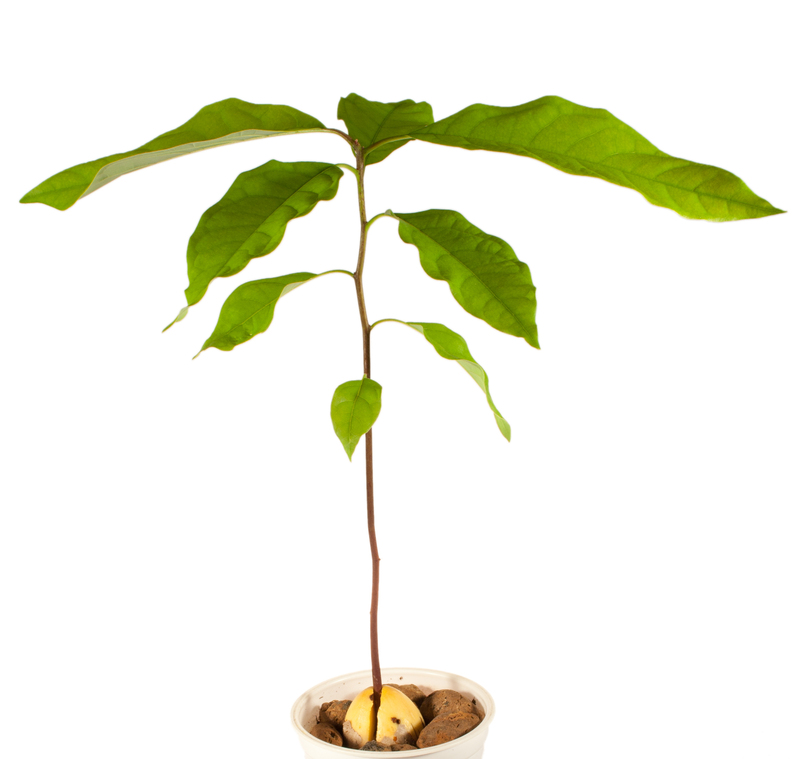Digging Deeper: Gardening's Role in Climate Action
Posted on 16/09/2025
Digging Deeper: Gardening's Role in Climate Action
As climate change emerges as one of the most pressing issues of our times, more people are looking for individual and collective ways to make a meaningful impact. While shifting to renewable energy and reducing fossil fuel consumption are vital actions, few realize the transformative potential lying in our own backyards. Gardening's role in climate action is more profound than most people imagine. From reducing greenhouse gas emissions to fostering biodiversity and enhancing soil health, gardening for climate change contributes uniquely to a healthier planet. Let's dig deeper into how your garden can become a powerful tool for climate resilience and environmental restoration.
How Gardens Combat Climate Change
At first glance, gardening may seem like a personal hobby or a source of fresh food and flowers. However, the connection between gardening and climate action goes much deeper. A thoughtfully designed garden can:
- Capture and store atmospheric carbon (carbon sequestration)
- Reduce urban heat island effects
- Support pollinators and wildlife
- Conserve water and improve water quality
- Decrease the need for chemical fertilizers and pesticides
- Promote local food production, reducing food miles
By incorporating sustainable gardening practices, anyone can turn a simple plot of land into a vibrant, climate-friendly powerhouse.
The Science Behind Carbon Sequestration in Gardens
One of gardening's most significant roles in climate action is capturing and storing atmospheric carbon dioxide (CO?). Through photosynthesis, plants absorb CO?, converting it into oxygen and organic matter. This captured carbon is stored both in plant tissues and, most importantly, in the soil.
- Trees and shrubs: Woody plants are especially good at storing carbon over the long term, thanks to their deep roots and woody trunks.
- Soil organic matter: Healthy soil, rich in organic material, acts as a major carbon sink. Composting, mulching, and minimal tilling protect this carbon reservoir.
- Perennial plants: These plants build up a stable root system, contributing to long-term soil carbon storage.
By increasing plant diversity and improving soil health, gardeners can amplify their positive climate impact and foster genuine environmental stewardship.

Creating an Eco-Friendly Garden: Strategies for Climate Action
If you want your garden to be part of the solution, here are some climate-friendly gardening techniques to implement right away.
1. Choose Native and Pollinator-Friendly Plants
Native plants are adapted to local conditions and require fewer resources to thrive. They also provide essential habitat and food sources for bees, butterflies, birds, and other pollinators--which are critical for ecosystem health. By supporting pollinator populations, your garden helps ensure sustainable agriculture and robust ecosystems, directly contributing to climate resilience.
2. Go Organic and Reduce Chemical Use
Chemical fertilizers and pesticides contribute to greenhouse gas emissions and can harm beneficial insects and soil microbes. Organic gardening practices--like composting, crop rotation, and natural pest management--build soil health and reduce reliance on synthetic inputs. This makes your garden more self-sustaining and less impactful on the climate.
3. Minimize Tilling and Protect the Soil
Conventional tilling disrupts soil structure and releases stored carbon into the atmosphere. To maximize gardening's climate action benefits:
- Use no-dig or low-till gardening methods
- Maintain ground cover with mulch or cover crops
- Build raised beds for improved soil structure
A healthy soil ecosystem harbors more carbon, retains water, and fosters greater biodiversity.
4. Compost to Cycle Nutrients and Build Soil Health
Composting recycles organic waste, reducing methane emissions from landfills. It also enriches the soil, improves water retention, and supports beneficial organisms. Adding compost increases your garden's carbon storage capacity, making composting a pivotal technique in climate-smart gardening.
5. Conserve Water and Capture Rain
Freshwater is becoming scarce due to climate change. Eco-conscious gardeners should:
- Install rain barrels or water butts to collect rainwater for irrigation
- Use drip irrigation and soaker hoses to minimize water loss
- Plant drought-tolerant species where appropriate
- Mulch to retain soil moisture and suppress weeds
*Water-smart gardening* practices not only reduce your environmental footprint but also make your garden more resilient to drought and extreme weather events.
Gardening and Biodiversity: Restoring Natural Balance
Biodiversity is nature's insurance policy against a volatile climate. Gardens that focus on diversity of species, structure, and flowering times offer food and shelter for a wide range of insects, birds, and small mammals. This forms the backbone of climate adaptation and ecosystem stability.
Why Biodiversity Matters for Climate Adaptation
- Pollinators: Insects, such as bees and butterflies, ensure the reproduction of many flowering plants, supporting food webs and crop production.
- Natural predators: Birds, bats, and beetles keep pest populations in check, reducing the need for chemical controls.
- Soil organisms: Microbes, worms, and fungi break down organic matter and cycle nutrients, maintaining fertile soil.
By prioritizing biodiversity, your garden becomes a miniature refuge, helping rebuilt ecosystem function lost elsewhere in the landscape.
Urban Gardening's Climate Impact
Cities are major contributors to climate change, but they also hold immense potential for mitigation. Urban gardens, green roofs, and community allotments can turn gray spaces green, offering multiple climate benefits:
- Cooling effects: Plants cool their surroundings, countering the urban heat island phenomenon.
- Stormwater management: Permeable garden areas reduce runoff and filter pollutants before they reach waterways.
- Local food production: Growing food close to home cuts transportation emissions, supports food security, and builds community resilience.
From balconies to boulevards, every bit of urban greening contributes to a healthier atmosphere and more livable cities.
Food Gardens: Cutting Emissions and Building Resilience
The global food system accounts for a significant portion of greenhouse gas emissions, through transportation, packaging, refrigeration, and the use of chemical inputs. Climate-smart gardening can shrink this carbon footprint by supplying ultra-local, healthy produce and teaching valuable skills.
Benefits of Growing Your Own Food for the Climate
- Reduced food miles: Food grown in your own garden eliminates the need for long-distance transport and packaging.
- Waste reduction: Gardeners tend to pick what they need, generating less postharvest loss.
- Sustainable diets: Homegrown fruits and vegetables support plant-based eating, which is generally less carbon-intensive.
- Community connections: Local gardening fosters community efforts and environmental awareness.
Even a small vegetable patch or herb planter can provide an abundance of fresh produce while lessening your environmental impact.
Climate-Resilient Garden Design
As climate patterns shift, gardens need to become more adaptable. Climate-resilient gardening emphasizes diversity, water management, and the selection of plants that can cope with changing conditions. Here are some strategies:
- Incorporate a mix of perennials and annuals to ensure year-round cover and productivity.
- Hazard mitigation: Plant windbreaks, shade trees, and deep-rooted species to buffer against storms, winds, and droughts.
- Flexible plant choices: Choose adaptable species that tolerate heat, cold, and erratic rainfall.
- Increase microhabitats: Use rocks, logs, and ponds to create spaces for different creatures and beneficial insects.
*The more diverse the garden, the more resilient it is*--and the greater its contribution to climate action.
Gardening as a Catalyst for Climate Education and Advocacy
Beyond individual actions, gardening for climate action is a catalyst for community engagement, learning, and advocacy. Gardens provide living classrooms where both children and adults can see--firsthand--how nature works, why it matters, and how it can be protected.
- Schools and educational gardens: Teaching sustainable gardening methods instills environmental responsibility.
- Community gardens: These spaces foster collaboration, resource sharing, and collective stewardship of the environment.
- Public outreach: Garden tours, workshops, and social media can spread awareness of gardening's climate benefits.
Through education and example, gardens inspire people to make environmentally responsible choices beyond the backyard gate.
Barriers and Opportunities in Climate-Friendly Gardening
Despite its potential, sustainable gardening faces several challenges:
- Lack of space, especially in densely populated areas
- Insufficient knowledge of native species and sustainable techniques
- Limited access to resources or suitable soil
- Pests and diseases exacerbated by climate change
However, the opportunities far outweigh the barriers. With creative solutions--like container gardening, vertical gardens, and community plots--almost anyone can participate in gardening for the environment. Educational resources, social media groups, and expert organizations can help beginners get started and stay inspired.

Practical Tips: Start Your Climate Action Garden Today
Want to make your garden a force for good? Here's how to get started:
- Assess your space: Balcony, yard, or windowsill--all have potential.
- Research native and climate-adapted plants for your area.
- Compost food and garden waste to build healthy soil.
- Use organic mulches like straw, wood chips, or leaves.
- Reduce single-use plastics by opting for durable gardening tools and biodegradable pots.
- Collect rainwater and monitor your water usage.
- Track your results: Notice which plants thrive, and keep refining your approach.
Every garden--no matter how small--can be a powerful act of climate optimism.
Conclusion: Gardening's Long-Term Promise for the Climate
The movement for planetary health doesn't begin only in distant rainforests or global summits--it starts right at home, with a trowel, compost pile, and a packet of seeds. Gardening's role in climate action is a potent, underappreciated force capable of transforming communities, restoring ecosystems, and building hope in a changing world.
When you nurture your garden, you nurture the earth. By embracing sustainable gardening practices, each of us can help reverse environmental damage, strengthen communities, and create a legacy of health for generations to come. Dig deeper into your soil, and discover the profound climate impact cultivated in every green leaf and rich, living root.
Every garden is a climate action plan in miniature. Start yours today--and grow a better future for all.

